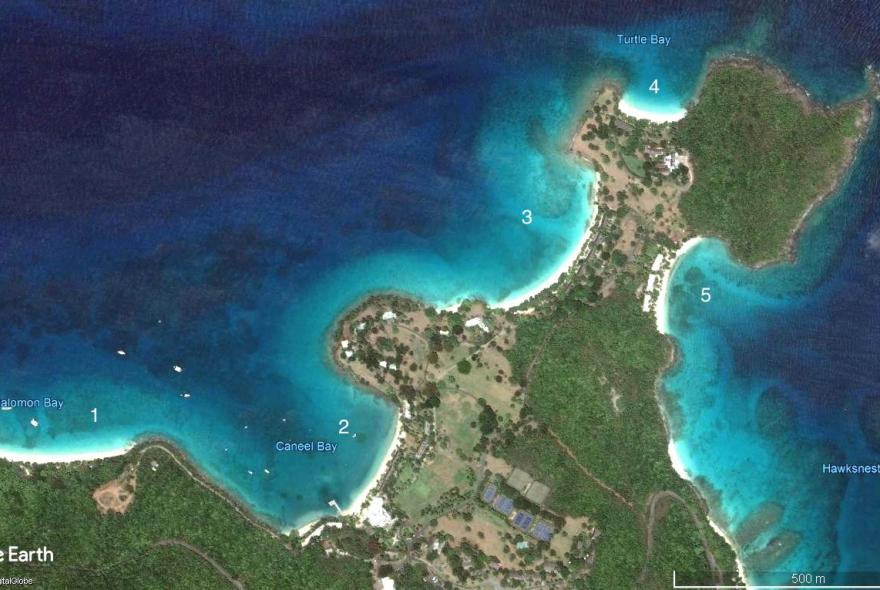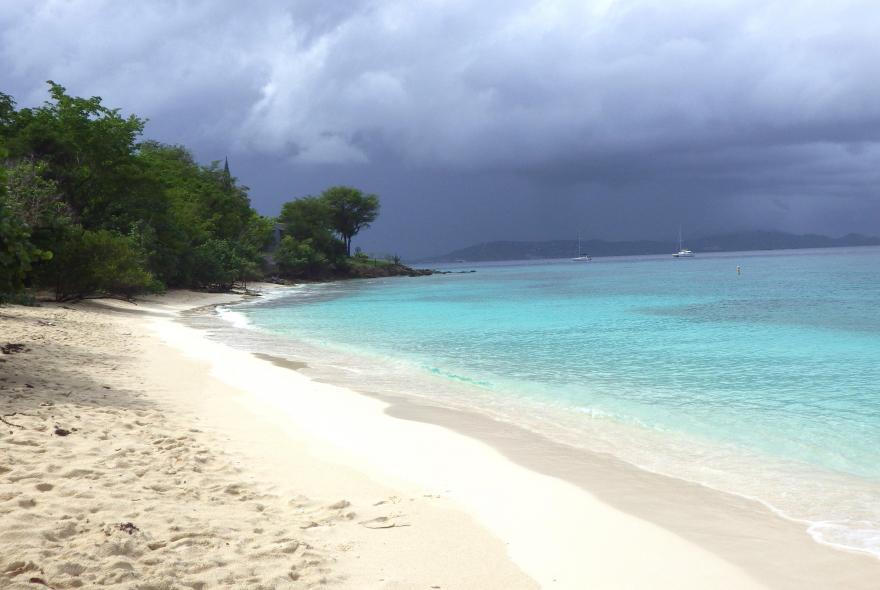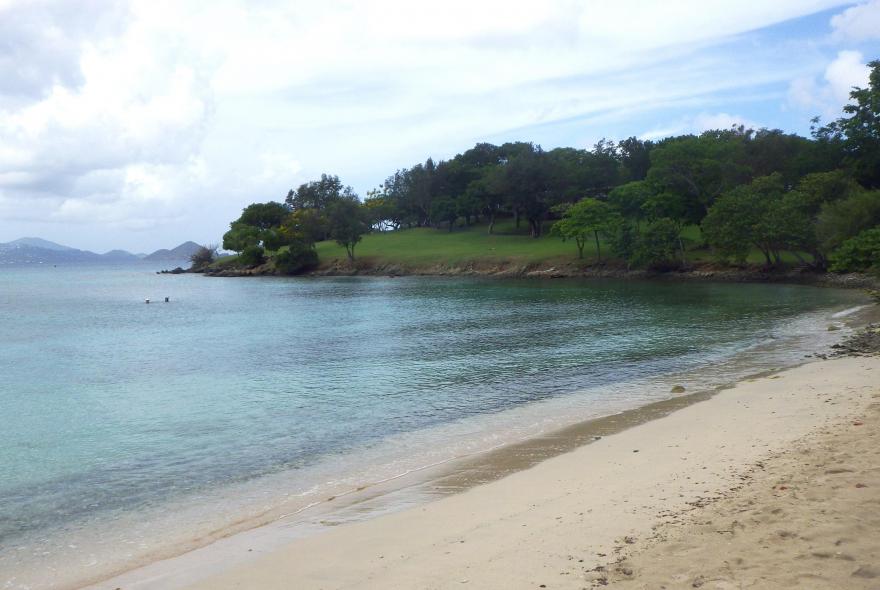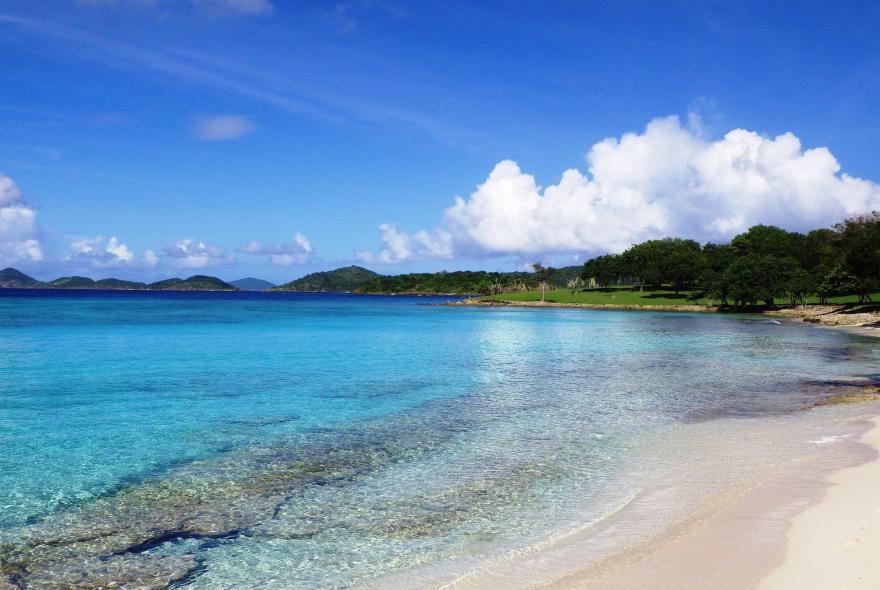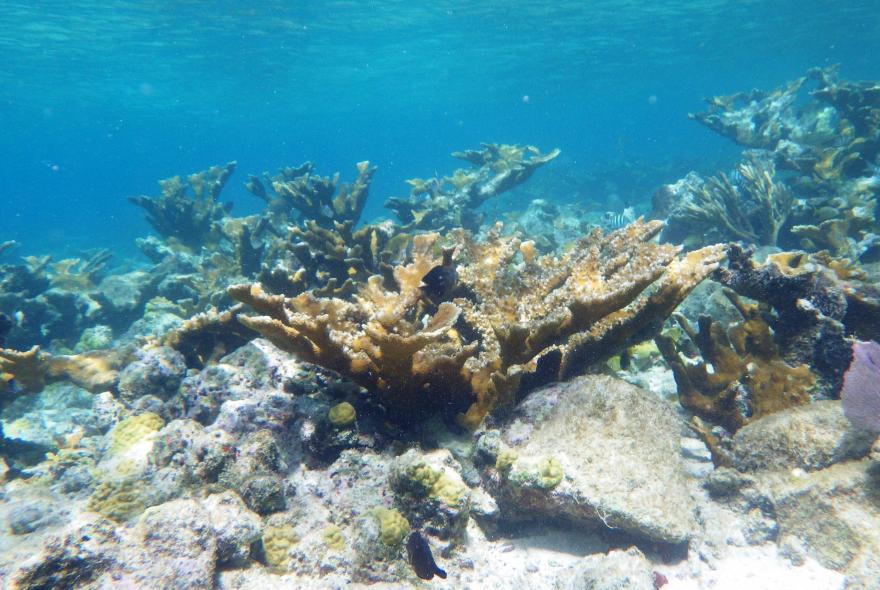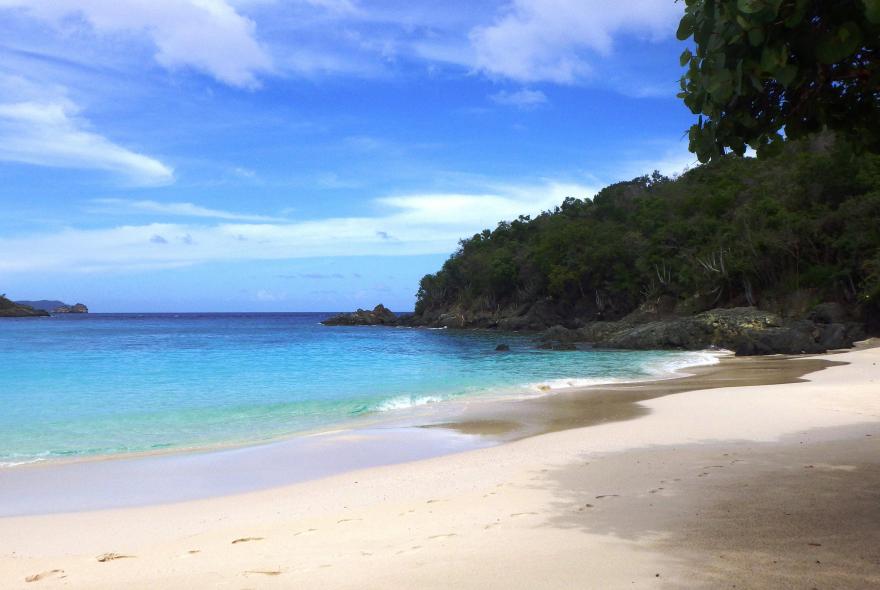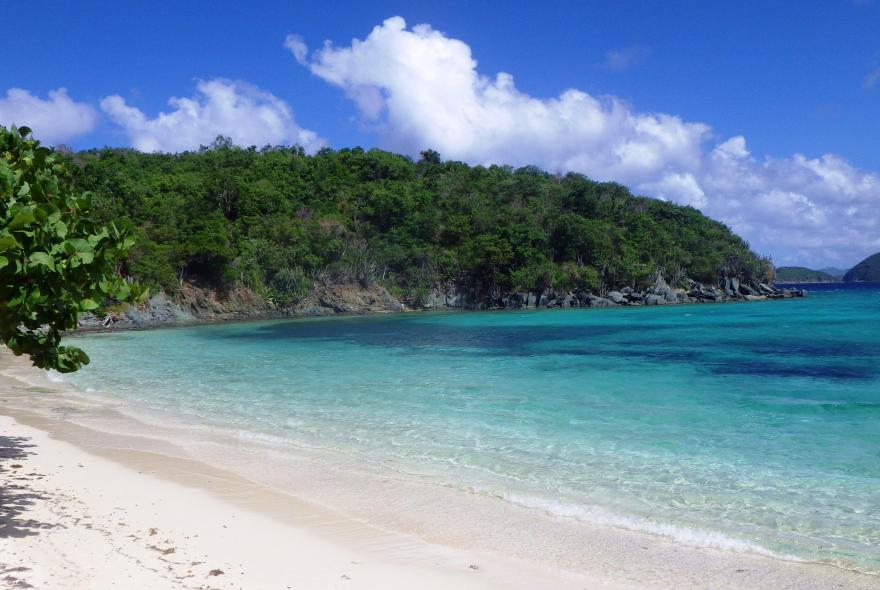Caneel Bay Resort. St. John, USVI, 00831-0720
Coordinates in degrees decimal: N 18.343018, E -64.786591
Visited in November, 2015. Photographer: Nigel Thomas. Cameras: Pentax WG-II and Sea & Sea 1G with DX1G housing
Website: https://caneelbay.com/pages/about-us.
Note that the resort is currently closed, see the above for progress on re-opening.
Introduction
Caneel Bay Resort is located on the northwest point of St. John, in the US Virgin Islands. St. John’s is the easternmost of the US Virgin Islands and is largely composed of the Virgin Islands National Park. The US Virgin Islands are geographically part of the Leeward islands of the Lesser Antilles, which extend east from Puerto Rico, and they comprise over 50 islands and cays.
St. John’s can be reached by taking a ferry from St. Thomas Island, where the Cyril E. King international airport is located. The airport has direct flights from the US and Canada.
Caneel Bay has five large sandy embayments with rocky headlands between them. Each of the bays and associated headlands have their own characteristics and support different biological communities. All of the headlands between the bays provide easy snorkelling but we would suggest that only the most confident and experienced snorkellers should attempt to swim around Hawksnest Point.
Environmental conditions affecting snorkelling.
The climate in St. John’s is tropical with little variation throughout the year. The mean daily maximum temperature is 32C, between June and October, with the minimums of 29C in January and February. Mean daily minimums vary between 22C in January and 26C between June and October.
Average rainfall is at a maximum (approx.140mm) between September and November, so be aware of localised runoff impacts.
Prevailing winds are from the East, including ENE and ESE directions, fairly consistently all year. Strongest winds are generally between 12 and 20 Knots, with the majority of the winds less than 12 Knots. The sheltered conditions in the embayments of Caneel Bay result in little wave or swell issues.
Tidal range is less than 0.5m on spring tides and as little as 0.01m on neaps.
Given the geography of the area, with several consecutive bays, the headlands may be subject to combined effects from wind, swell and tidal streams, so always check conditions before starting a long snorkel around any headland.
Finally, hurricanes. The area was last hit in 2017, resulting in significant damage, which caused Caneel Bay Resort to close. Previous severe hurricanes have occurred in 1989 and 1995. The hurricane season is between June and November.
Habitats and species.
The habitats that can be found in the area include, Acropora coral dominated reef, boulder coral reef, vertical and overhanging rock, shallow rock ledges, clear sand, algal dominated sand, seagrass beds and clear open water. The diversity of species groups is high, with the most diverse group comprising 44 fish species, both open water and reef associated. The area also supported, 21 hard coral species, 15 sponge species and 18 algal and seagrass species. Other surprisingly diverse groups included the marine worms and the sea squirts. In total 152 species were identified, including some healthy turtles.
Prepared without the support of the resort.
